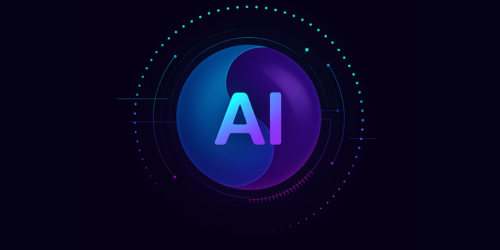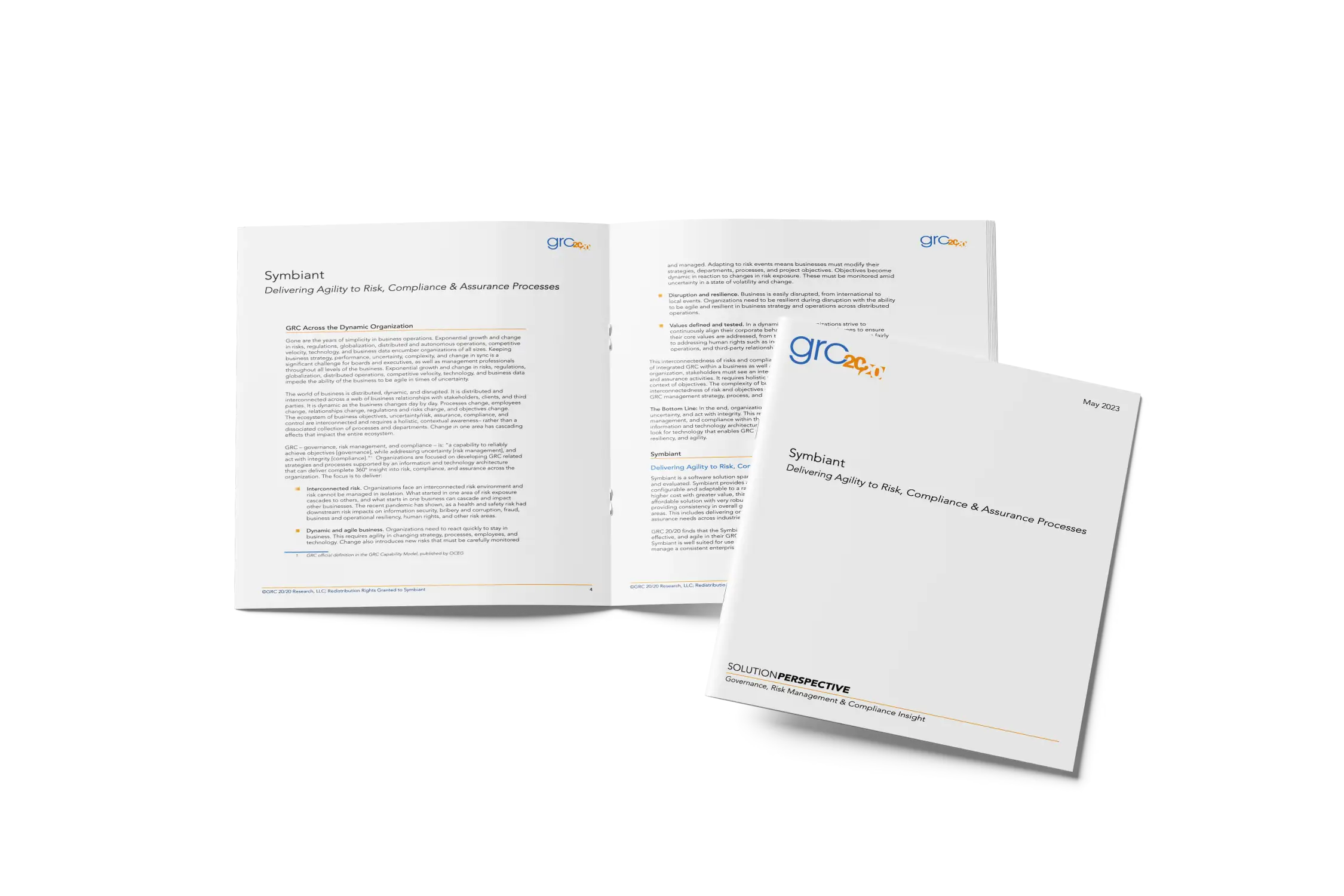GRC, Risk & Audit Enterprise Software
Symbiant Enterprise Risk Management (ERM) Software
Unify risk, compliance, audit and resilience in one connected, affordable system — align risk to strategy, protect stakeholders, and enable long-term success.
Symbiant is more than ERM software. It’s a fully integrated GRC and Audit Management platform — affordable, modular, and designed to connect risk, compliance, and assurance in one system.
From only £100 per module/month for unlimited users*
Award-Winning GRC & Audit Software, Trusted Since 1999 by Companies of All Sizes


































Symbiant ERM Solution
What Enterprise Risk Management is and why you need it
Enterprise Risk Management (ERM) is more than a framework. It’s the ability to see risk across the whole enterprise, strategic, operational, financial, cyber, compliance, and understand how it impacts your objectives.
Every organisation faces risks, but not every organisation manages them effectively. From regulatory change and cyber threats to supply chain disruption and ESG pressures, today’s risk environment is too complex for spreadsheets, emails, and disconnected tools.
Symbiant’s Enterprise Risk Management (ERM) software brings everything into a single, robust, integrated platform. Our modular system unifies risk registers, business objectives, controls, audits, incidents, business continuity plans, and compliance, giving you a true enterprise-wide view of risk.
With real-time dashboards, automated workflows, and a Single Source of Truth (SSOT), Symbiant helps your teams identify, assess, and respond to risks faster. No silos. No duplication. Just clear, connected insights that allow leadership to make better, faster, evidence-based decisions.
And unlike complex, monolithic ERM systems, Symbiant is affordable, scalable, intuitive and easy to embed. Each module is just £100 per month* with unlimited users, so you can build a system that fits your needs today, and adapts with you tomorrow.
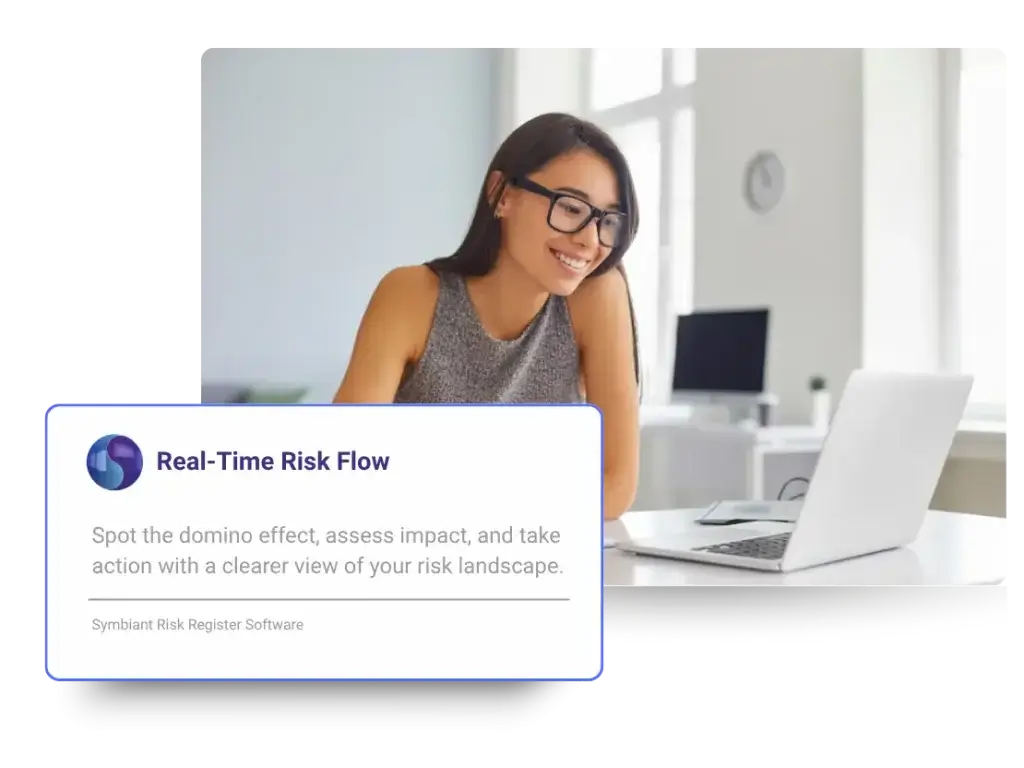
Global frameworks demand it: ISO 31000, COSO ERM, UK SMCR, EU DORA, APRA CPS 230, and other regulations require a connected approach.
Boards expect it: Investors and regulators want proof that risks are managed and resilience is built-in.
Organisations need it: Disconnected, manual approaches waste time, create blind spots, and increase compliance risk.
Enterprise Risk Management (ERM) Software
Why Enterprise Risk Management Matters
Enterprise Risk Management isn’t about avoiding risk, it’s about understanding it, aligning it with strategy, and turning it into opportunity. Symbiant award-winning, highly trusted ERM solution helps you build a risk-aware culture, with every process connected to your strategic objectives so risk management becomes a driver of growth, not just a compliance task.
Gain confidence that risks are properly identified, assessed, and mitigated. With Symbiant, your teams benefit from dynamic insights and visual dashboards that continually improve oversight and lift the organisation’s overall risk culture.
Maintain a cohesive, shared view of compliance to protect your business from fines, reputational harm, and regulatory penalties. Action-oriented dashboards and reports give obligation owners clear visibility and accountability.
Support the full audit lifecycle. Symbiant makes it easy to capture audit findings, link them to risks and controls, and provide boards and regulators with clear evidence of oversight.
Empower your organisation to identify, investigate, and mitigate workplace incidents and hazards. Symbiant’s dashboards and reports provide visibility into risks, ineffective controls, and trends, helping you strengthen your culture of safety.
Identify and self-assess critical services and operations. By centralising data across business units, Symbiant enables effective resilience testing, oversight, and structured reporting to meet regulations like ISO 22301.
Symbiant ERM Solution
Key Challenges ERM Software Helps You Overcome
Enterprise Risk Management should be more than a fragmented process. By addressing these interconnected challenges in a single, integrated system, Symbiant ERM Software turns complexity into clarity and risk into opportunity. Instead of chasing data across spreadsheets and siloed tools, you gain real-time oversight, accountability, and confidence that every risk is being managed in alignment with your strategic objectives.
Customisable, Scalable ISO 31000 Risk Management Software
Inside Symbiant GRC & Audit Enterprise Risk Management
Explore the key principles, challenges, and solutions that define modern ERM. From breaking down silos to embedding risk into culture, see how Symbiant transforms Enterprise Risk Management into a connected, strategic capability.
Symbiant is more than ERM software. It’s a fully integrated GRC and Audit Management platform — affordable, modular, and designed to connect risk, compliance, and assurance in one system.
What Symbiant ERM Software Helps You Achieve
Symbiant’s Enterprise Risk Management (ERM) Software goes far beyond simply tracking risks, it empowers your organisation to build accountability, strengthen compliance, and make risk intelligence actionable across every level of the business.
With Symbiant, you can:
Establish clear ownership of risks and controls – Assign accountability so everyone knows their responsibilities, and easily present this information to boards, regulators, and stakeholders.
See the full picture – Link risk, risk assessments, control testing, business objectives , incidents, and audit findings in one interconnected, agile platform, making it simple to understand how each element impacts the bigger risk landscape.
Standardise risk and control libraries – Ensure consistency across the organisation with shared taxonomies and libraries, so every team is working from the same definitions and frameworks.
Strengthen regulatory relationships – Drive improved compliance and reporting with accurate, timely data that enhances transparency and builds trust with auditors and regulators.
Accelerate audit processes – Link risks, controls, and actions directly into your audit workflows, reducing manual effort and providing clear evidence for oversight.
Reduce compliance workload – Automate assessments, reminders, attestations, and reporting, freeing up teams to focus on analysis and strategy rather than repetitive admin.
Improve decision-making – Provide leadership with real-time dashboards and timely reports, ensuring that critical decisions are made with confidence and backed by accurate data.
Build a strong risk culture – Make it simple for employees across departments to engage with ERM processes, embedding risk awareness into everyday operations.
Adopt a holistic view of enterprise risk – Connect financial, operational, IT, compliance, and strategic risks in one system to understand interdependencies and act proactively.
Symbiant makes ERM practical, scalable, and affordable, replacing outdated spreadsheets and siloed tools with a connected ecosystem that empowers organisations to manage risks more effectively, align with regulatory requirements, and protect long-term objectives.
ERM, GRC, IRM – What’s in a Label?
Over the years, the terminology around risk management has shifted. Different industries and vendors have promoted different labels, but at their core they all point toward the same principle: managing risk in a connected, enterprise-wide way.
The two most common alternatives are:
GRC – Governance, Risk and Compliance
IRM – Integrated Risk Management
So how do these compare with ERM (Enterprise Risk Management)?
GRC – Governance and compliance are essential to any risk framework. In practice, they are already part of ERM. Governance defines accountability and oversight, while compliance ensures obligations are met. ERM simply places these within a wider context — aligning them with business objectives and strategy.
IRM – Integration is not a separate concept but the foundation of ERM itself. True ERM requires risk assessments, incident reporting, controls assurance, audit findings, and compliance activities to be interconnected. Symbiant Integrated Risk Management solution was built around this principle from day one, ensuring risks are never viewed in isolation.
And while controls testing (whether SOX, NIST, ISO 27001, or other frameworks) is vital, it is only one piece of the ERM picture. Controls on their own do not give organisations a full understanding of risk. That’s why Symbiant connects controls with risks, incidents, audits, and business objectives, providing a holistic, strategic view of risk.
At Symbiant, we are helping organisations see and manage risk across the enterprise, not in silos. But in the end, labels matter less than outcomes. What truly matters is how effectively a system helps you:
Break down silos,
Gain real-time visibility,
Strengthen compliance,
Improve accountability, and
Use risk insights to drive smarter decisions.
What Problems Does ERM Solutions Solve?
Traditional risk management grew up in silos, each department looking after its own risks, with separate frameworks, standards, and even legislation for specific risk types like health and safety, environmental, or IT. While this sometimes led to strong oversight in one area, it created blind spots in others. Fraud might be under-invested, while safety risks were over-resourced. The result: inconsistency, inefficiency, and gaps in enterprise-wide visibility.
The Problems with Siloed Risk Management
Fragmentation – Different teams describe, define, and report risks in different ways, making it difficult to compare or aggregate information.
Limited oversight – Without a consolidated view, boards and executives struggle to see the bigger picture or identify systemic issues.
Reactive processes – Reports are often compiled manually, across multiple systems, leading to delays and backward-looking insights.
Duplicated effort – Repeated processes, multiple systems, and duplicated reporting create wasted time and higher costs.
Low engagement – Risk remains the domain of specialists, leaving the wider workforce disconnected from the process.
In today’s environment of pandemics, geopolitical conflicts, ESG pressures, cybersecurity threats, and rapid regulatory change, this siloed model simply doesn’t work. Organisations need ERM to bring everything together into one holistic, interconnected view.
Why ERM Matters Today
Complex risk and control environments demand a joined-up approach. Managing risks in silos means critical interconnections get missed.
Continuous monitoring is required, risks and controls can’t just be reviewed annually; they need ongoing oversight.
Interconnected risks like cyber, compliance, and operational resilience are deeply linked; organisations need an integrated view.
Regulatory change is accelerating — from sanctions to ESG reporting, organisations are under pressure to keep up.
Digital transformation has redefined how businesses operate, requiring risk, audit, and compliance to modernise alongside.
Demand for high-quality, timely risk data is rising — boards, regulators, and investors expect reliable insights in real time.
Data governance requirements are tightening, with regulators asking where data comes from, how it’s stored, and who owns it.
Resource constraints mean organisations must do more with less, using technology to reduce manual effort and expand capacity.
How Symbiant ERM Solves These Problems
Symbiant’s Enterprise Risk Management Software eliminates silos and inefficiencies by creating a Single Source of Truth (SSOT) for your risks, controls, incidents, compliance, and audits. With automated workflows, real-time dashboards, and connected modules, Symbiant helps you:
Replace inconsistent processes with a standardised framework across the business.
Give boards and executives a clear, aggregated view of risk exposure.
Reduce cost and time wasted on manual reporting.
Embed risk awareness across the workforce with simple, role-based dashboards.
Build resilience and agility, ensuring risks are managed proactively, not reactively.
With Symbiant, you stop firefighting fragmented risks and start building a resilient, risk-aware organisation where good decisions can happen faster.
Why Manual and Siloed Approaches Don’t Work
For years, many organisations relied on spreadsheets, emails, and shared folders to manage risk, audit, and compliance processes. Others invested in single-purpose systems from different vendors that don’t connect with each other. Even vendors that grew through acquisitions often left customers with bolt-on systems that don’t provide a truly unified view of risk.
The result is the same: fragmented data, duplication of effort, and a lack of trust in reporting. Instead of clear insight, leadership is left piecing together risk information from multiple sources — often in late-delivered Excel pivot tables — resulting in a backward-looking view of risk.
The Problems With Manual and Non-Integrated Risk Management
No joined-up view of risk – Data is spread across spreadsheets, emails, and separate systems, making it impossible to derive actionable insights.
Weak data governance – Without audit trails, it’s unclear what data looked like at a given point in time or who made changes, undermining compliance credibility.
Data lags and errors – Manual collation slows reporting and increases the risk of mistakes, reducing trust in decision-making information.
Difficulty adapting to regulatory change – Every update means reworking manual processes, creating delays and compliance gaps.
Reduced efficiency – Repeated processes and disconnected systems increase the likelihood of control breakdowns and remediation costs.
Lower engagement – Staff spend more time aggregating and entering data than improving the organisation’s risk culture.
Regulatory challenges – Regulators have less faith in manually collated data, making audits and compliance reviews harder.
Greater exposure – Siloed risk management often leads to missed issues, more compliance breaches, and additional risk even
How Does ERM Solve These Problems?
At its core, risk is the effect of uncertainty on objectives. No matter the type, cyber, operational, financial, compliance, or ESG, all risks share this principle. That’s why Enterprise Risk Management (ERM) is so powerful: it allows organisations to view, analyse, and manage all risks consistently, while still recognising nuances for specific categories.
Symbiant’s ERM software solves the inefficiencies of traditional, siloed approaches in the following ways:
1. One Consistent View of Risk
All risks are captured, described, and managed in a standardised way across the organisation. This eliminates confusion from inconsistent terminology, reporting styles, or departmental silos. Leadership gains a clear, unified understanding of the organisation’s risk profile.
2. Integrated Risk Libraries and Taxonomies
With Symbiant, risks, controls, incidents, and objectives are linked to central libraries (causes, impacts, controls, events). This creates a connected ecosystem that allows you to:
Aggregate risks across the enterprise, building a holistic view.
Report consistently to boards, risk committees, and regulators.
Run powerful analytics to uncover systemic issues, trends, and emerging threats.
3. Connected Risk Processes
Every process, from risk assessments and incident reporting to audits and control testing, is linked to the central framework. This ensures information doesn’t sit in silos, but instead contributes to a dynamic, enterprise-wide risk profile that updates in real time.
4. Enterprise-Wide Engagement
ERM makes risk everyone’s responsibility, not just the domain of specialists. With Symbiant’s intuitive dashboards and workflows, employees across departments can engage in identifying, assessing, and managing risks, building a stronger risk-aware culture.
5. Better Risk Information
Symbiant provides decision-makers with timely, accurate, and understandable insights. Reports and dashboards are real-time, easy to interpret, and linked directly to strategic objectives — giving boards and executives the confidence to act quickly and effectively.
6. Lower Cost, Greater Efficiency
By replacing multiple disconnected systems and manual reporting with a single, modular platform, Symbiant reduces both time and financial investment. Automation eliminates duplication, streamlines compliance tasks, and frees up teams to focus on strategy rather than admin.
The Symbiant GRC & Audit Enterprise Management Framework
Enterprise Risk Management (ERM) works best when it is supported by a clear framework, one that provides governance, builds culture, integrates processes, ensures accountability, and adapts continuously. Symbiant ERM is designed to bring all of these elements together in one connected platform, aligned with ISO 31000, and other global standards.
The Core Components of an Effective ERM Framework
1. Governance and Oversight
Strong ERM begins with governance. Symbiant enables organisations to define roles, responsibilities, and accountability clearly — from board level to frontline teams. Risk appetite, frameworks, and policies can be documented and monitored, giving leadership confidence that risk is aligned with strategic objectives.
2. People and Culture
ERM succeeds only when it is embraced across the business. With Symbiant, every employee can engage with risk through intuitive dashboards and workflows. This builds a risk-aware culture where risk is not just the responsibility of specialists, but part of everyday decision-making.
3. Integrated Processes and Systems
Rather than managing different risk types in isolation, Symbiant connects them into a single ecosystem. Risk assessments, controls, incidents, audits, compliance tasks, and KPIs all feed into the same platform — ensuring consistency, reducing duplication, and enabling a complete enterprise-wide view of risk.
4. Reporting and Accountability
Real-time reporting and clear accountability are critical. Symbiant’s dashboards and automated workflows ensure risk data is visible to the right people at the right time. Boards, regulators, and executives gain reliable insights for faster, evidence-based decisions.
5. Continuous Improvement
Risk management is not static. Symbiant helps organisations adapt through issue tracking, action plans, root cause analysis, and regular reviews. This ensures that the framework evolves with regulatory changes, emerging risks, and organisational growth.
The Value of ERM with Symbiant
The ability to adapt and respond quickly to unforeseen risks is no longer optional — it’s essential. From pandemics to supply chain disruptions and regulatory change, organisations need risk technology that keeps them resilient and agile.
Symbiant’s cloud-based Enterprise Risk Management Software makes this possible. Data and processes can be accessed securely from anywhere, ensuring business-as-usual operations as well as rapid response in times of crisis. Regulatory updates can be rolled out quickly and efficiently. Strong data governance ensures that accurate, auditable information is always available to boards, executives, and regulators for faster decision-making.
With Symbiant, ERM becomes an interconnected process where risks, controls, compliance policies, incidents, audits, and key indicators are linked together. This provides clarity on how investments in risk management and compliance deliver measurable results, building trust with both internal and external stakeholders.
The Benefits of Symbiant ERM
Efficiency
Automate and simplify risk data capture and workflows.
Eliminate manual reporting and cut administrative effort.
Boost productivity with real-time dashboards and reduced downtime.
Manage regulatory change with automated alerts, attestations, and streamlined processes.
Effectiveness
Embed a risk framework that acts as a strategic enabler, not just a compliance tool.
Gain deeper insights from interconnected data and dynamic reporting.
Deliver evidence-based risk oversight to regulators with audit trails and rapid reporting.
Strengthen board-level decision-making with timely, accurate information.
Agility
Engage more staff by making ERM simple, intuitive, and role-specific.
Adapt quickly to new regulations, organisational changes, or emerging risks.
Configure workflows, reports, and dashboards with self-service tools as your framework matures.
A Strategic Step Forward
Investing in an ERM solution is a big step, but it’s also a strategic one. With Symbiant, you don’t just comply with regulations; you build a resilient, efficient, and agile organisation capable of thriving in today’s uncertain environment.
ERM is interconnected, and so is the journey of embedding it successfully. Symbiant helps you bring your people, processes, and technology together to create a single, enterprise-wide risk ecosystem that delivers clarity, accountability, and confidence.
Objective-Centric ERM
Traditional ERM focuses on listing risks, but without clear connection to business objectives, those risks have little meaning.
Symbiant transforms this approach by making objectives the foundation of risk management.
With Symbiant Business Objectives Module, every risk is linked to the objectives it could impact, ensuring decisions are made with full strategic context. Risk appetites can be defined for each objective, and when a threshold is exceeded, automated alerts notify owners to review and respond.
Linked modules such as Risk Registers, Controls and Policies, and Incident Reporter ensure that all risks, mitigations, and events are aligned with performance goals. This creates a complete, dynamic view of organisational resilience, one where risk management directly supports strategy rather than simply recording it.
Objective-centric ERM helps leadership move beyond reactive reporting to proactive decision-making, ensuring every action, control, and mitigation contributes to achieving business success.
Symbiant AI: Smarter Enterprise Risk Management
Key ways Symbiant AI supports ERM
- Predictive risk modeling: The AI analyses system-wide data patterns to predict emerging risks and identify overlooked threats before they escalate into major problems.
- Root cause and consequence analysis: It helps pinpoint why risks or incidents occur and maps out the potential ripple or “domino” effects of control failures across the organisation.
- Logical, data-driven scoring: It goes beyond subjective judgment by applying logic-based risk scoring and automatically recalculating residual risk in real-time as controls change.
- Discover emerging threats: Symbiant AI scans data to uncover new potential risks from audit findings, ensuring emerging threats are identified and addressed.
- Intelligent data linking: It automatically connects risks, controls, objectives, and incidents across different modules. This turns disconnected data into a holistic view of your risk landscape.
- Identification of gaps and vulnerabilities: By analysing risk and control data, the AI can identify hidden vulnerabilities and assess the effectiveness of your current controls.
- Tailored recommendations: It suggests tailored risk mitigation strategies and drafts new or improved controls aligned with your business objectives.
- Automated content generation: The AI can generate new risks, controls, and mitigation strategies based on your organisational data, giving your team a head start and saving time.
- Data cleanup: It can detects duplicate risk entries and rewrites vague descriptions, creating a clearer and more accurate risk register.
- Automated reporting: The AI assists in creating precise reports by suggesting key details, opportunities, and potential impacts for a comprehensive risk analysis.
Hover to Explore our Solutions.
Symbiant
All-in-One GRC & Audit
Management Powerhouse
Symbiant’s flexible, modular platform streamlines governance, risk, compliance, and audit—so you can reduce complexity, adapt fast, and stay focused on achieving your objectives.
Our Solution at a Glance:
Risk Management Software
The Symbiant Risk Management Software module enables organisations to identify, understand, and manage risks with ease and efficiency. It provides a streamlined approach to monitoring, assessing, and mitigating risks, ensuring informed decisions and compliance.
AI-Powered Assistant
Symbiant AI connects data across your organisation, delivering actionable insights and seamless workflows. From logical, data-driven risk scoring to uncovering root causes and predicting the domino effect of control failures, Symbiant AI empowers smarter, faster decisions. Eliminate duplicate risks in seconds, refine controls, identify emerging risks, and so much more—all tailored to your business.
Audit Management Software
The Symbiant Audit Management Software module streamlines audit planning, action tracking, and time management. It automatically pulls relevant data, allows easy report customisation, and generates professional audit reports.
Compliance Management Software
The Symbiant Compliance Management Software module simplifies the management of compliance tasks. It helps organisations track regulations, manage audits, and ensure adherence to legal requirements, driving efficiency and minimising risk.
Risk Management Software
The Symbiant Risk Management Software module enables organisations to identify, understand, and manage risks with ease and efficiency. It provides a streamlined approach to monitoring, assessing, and mitigating risks, ensuring informed decisions and compliance.
AI-Powered Assistant
Symbiant AI connects data across your organisation, delivering actionable insights and seamless workflows. From logical, data-driven risk scoring to uncovering root causes and predicting the domino effect of control failures, Symbiant AI empowers smarter, faster decisions. Eliminate duplicate risks in seconds, refine controls, identify emerging risks, and so much more—all tailored to your business.
Audit Management Software
The Symbiant Audit Management Software module streamlines audit planning, action tracking, and time management. It automatically pulls relevant data, allows easy report customisation, and generates professional audit reports.
Compliance Management Software
The Symbiant Compliance Management Software module simplifies the management of compliance tasks. It helps organisations track regulations, manage audits, and ensure adherence to legal requirements, driving efficiency and minimising risk.
Your questions answered
Frequently Asked Questions About Symbiant ERM Software
How does Symbiant ERM support risk management?
Symbiant provides a holistic, robust platform for managing risks across the enterprise. With the Risk Register module, organisations can identify, assess, and monitor risks in a consistent, structured way. Risks can be linked to controls, incidents, objectives, workshops, and audits, ensuring that nothing is managed in isolation. Dynamic reporting, heatmaps, and dashboards provide real-time visibility for leadership, while automated workflows keep risk owners accountable.
How does Symbiant ERM support compliance management?
Compliance is fully integrated within Symbiant’s ecosystem. Organisations can track regulatory change, manage compliance monitoring, and automate attestations and reviews. Controls can be tested regularly and linked directly to risk registers and policies, while compliance workflows and reminders reduce manual effort. Role-based security ensures sensitive compliance data is protected.
How does Symbiant ERM support operational resilience and business continuity?
Operational resilience requires visibility over critical processes and dependencies. Symbiant’s BCP module helps organisations identify vital services, map resources, and test continuity plans. Risks, incidents, and controls can all be linked, giving resilience teams a complete, integrated picture.
How does Symbiant ERM support audit management?
Audit is fully embedded in Symbiant’s ERM platform. Symbiant modules capture audit plans, test results, and findings in a single system. Risks and controls can be directly linked to audits, creating transparency across the organisation. Audit Action Tracker ensures remediation is monitored to completion, while automated workflows and dashboards streamline reporting to committees and regulators.





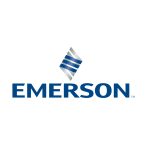

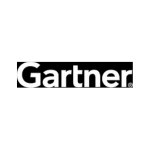

Award winning grc & Audit management software
25 Years. Thousands of Users. One Trusted Platform.
With over 25 years of innovation in Governance, Risk, and Compliance (GRC) and Audit Management, Symbiant is trusted by organisations across every sector. Our clients love how our powerful, affordable, award-winning and fully customisable risk software helps them stay compliant, make smarter decisions, and reduce complexity, without the costly overheads.
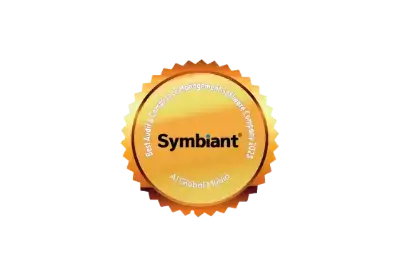

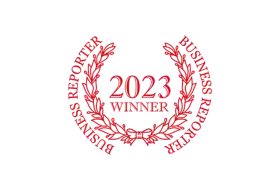
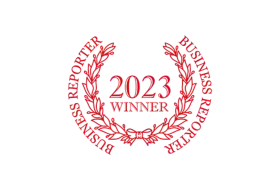





unbeatable pricing

